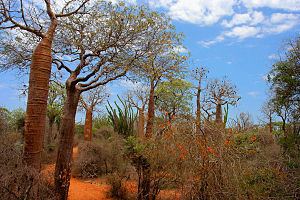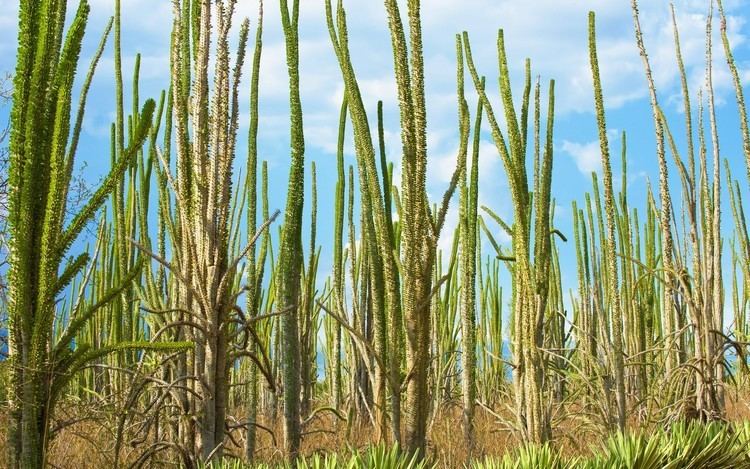Realm Afrotropic Area 43,400 km² | ||
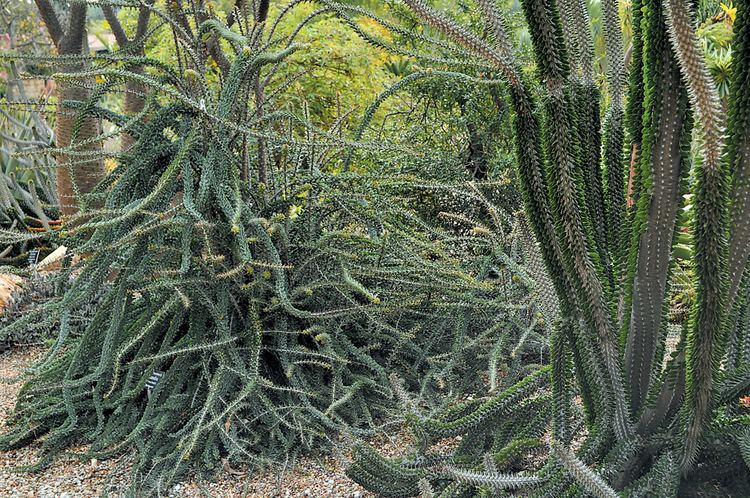 | ||
Elevation 55–200 metres (180–656 ft) Climate type Hot desert climate (BWh) | ||
The Madagascar spiny forests (also known as the Madagascar spiny thickets) is an ecoregion in the southwest of Madagascar. The vegetation type is found on poor substrates with low, erratic winter rainfall. The ecoregion contains an outstanding proportion of endemic plant species and is part of the Global 200.
Contents
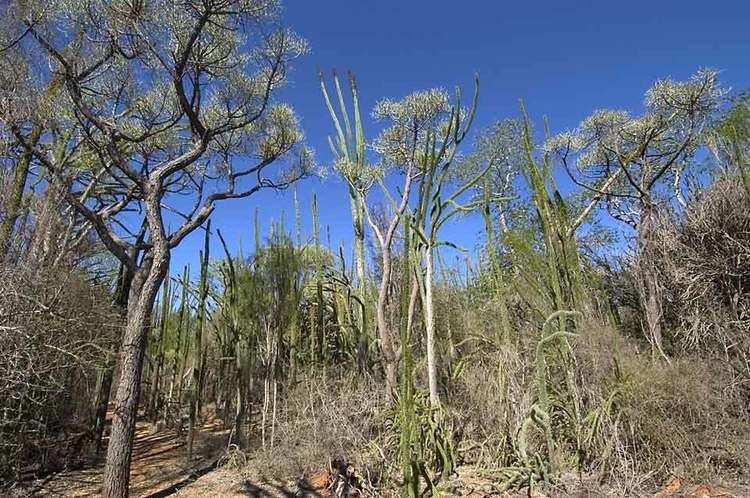
Flora
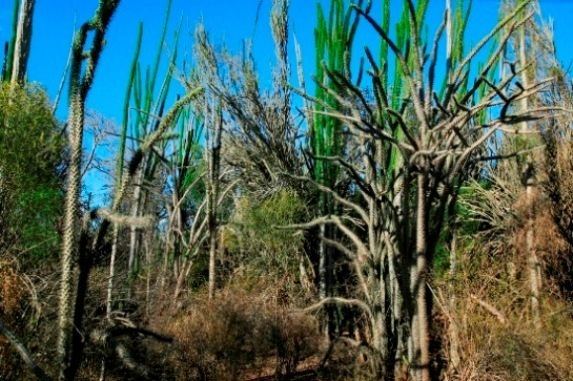
Around 95% of the original flora in the spiny forests is endemic, which makes it the most unique ecoregion in Madagascar. Many constituent plants show extreme adaptations to drought. Spiny plants of the endemic subfamily Didiereoideae form a conspicuous component, especially towards the east. They are woody but distantly related to the cacti. The remaining component of the forests is dominated by members of the plant families Burseraceae, Euphorbiaceae, Anacardiaceae and Fabaceae, all of which have representatives elsewhere.
Fauna
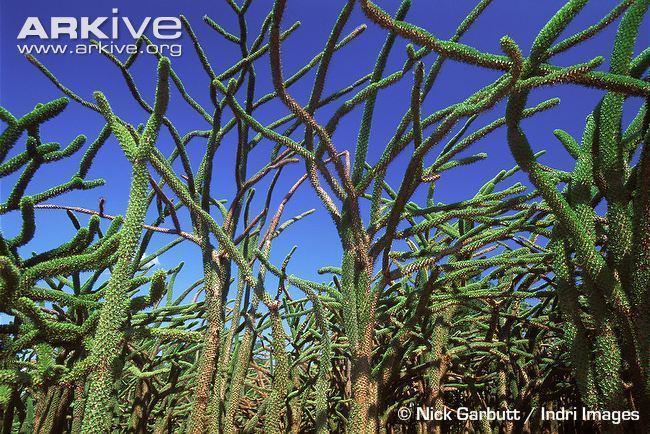
Notable inhabitants of the spiny thickets include the spider tortoise (Pyxis arachnoides) and the radiated tortoise (Astrochelys radiata), the gecko Ebenavia maintimainty, several lemurs including Verreaux's sifaka, Grandidier's mongoose, and eight endemic birds.
Conservation
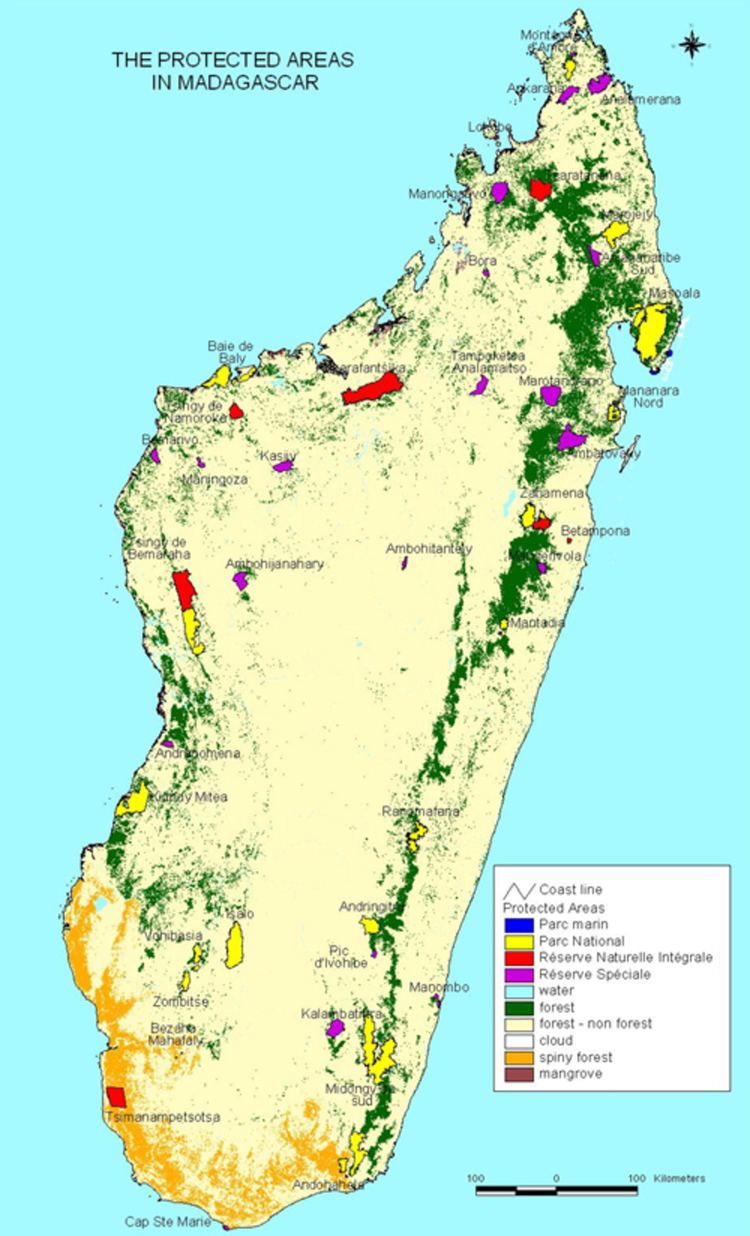
Existing reserves protect a maximum of 3% of remaining vegetation, including Tsimanampetsotsa National Park, Berenty Reserve and Beza Mahafaly Reserve. Andohahela National Park offers limited protection through its 'parcel 3' section. Elsewhere the spiny forest habitat is under pressure from human exploitation. The main impacting activities are burning for conversion to grazing land, harvesting for charcoal and firewood, and logging for construction.
